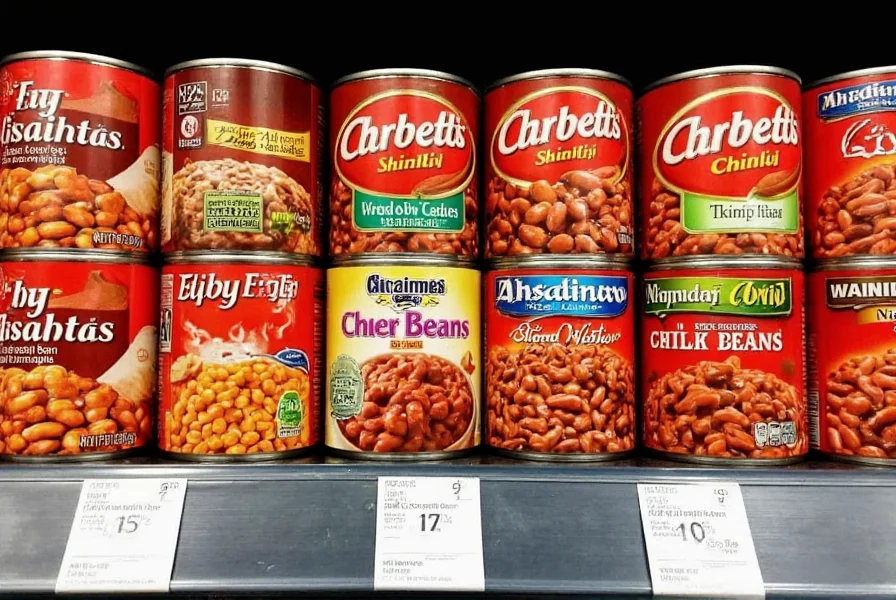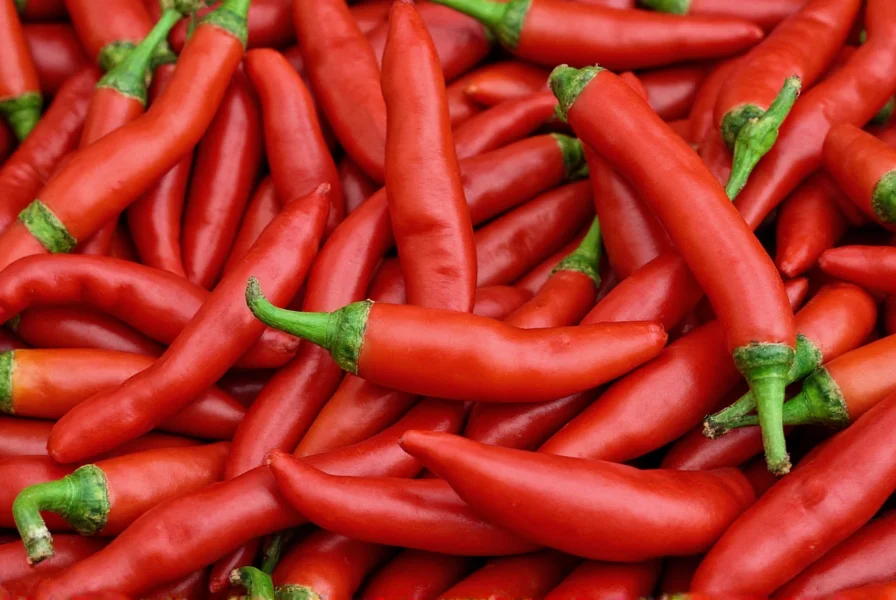Canned chili beans offer a time-saving solution for busy cooks while delivering consistent texture and flavor. Unlike plain canned beans, chili beans come pre-seasoned in a robust sauce that forms the foundation for authentic chili recipes. Understanding how to select and maximize their potential transforms this humble pantry item into versatile culinary building blocks.
Understanding Canned Chili Beans Composition
Most commercial canned chili beans contain a combination of beans, tomatoes, water, chili powder, salt, and various spices. The primary bean varieties used include:
| Bean Type | Flavor Profile | Texture Characteristics |
|---|---|---|
| Kidney Beans | Earthy, slightly sweet | Firm, holds shape well during cooking |
| Pinto Beans | Rustic, nutty flavor | Softer texture, creamy when cooked |
| Black Beans | Sharp, almost citrusy notes | Firm texture with thin skin |
When examining canned chili beans labels, look for products with minimal additives. The best options list simple ingredients without artificial preservatives or excessive sodium. Many premium brands now offer low-sodium varieties and organic options that appeal to health-conscious consumers seeking authentic flavor without compromise.
Nutritional Benefits and Considerations
Canned chili beans deliver significant nutritional advantages as part of a balanced diet. A standard 15-ounce can typically provides:
- Approximately 20-25 grams of plant-based protein
- 10-15 grams of dietary fiber per serving
- Essential minerals including iron, magnesium, and potassium
- B-vitamins that support metabolic functions
While convenient, canned chili beans often contain higher sodium levels than homemade versions. For those monitoring sodium intake, rinsing the beans thoroughly under cold water can reduce sodium content by up to 40%. Health-conscious cooks can enhance nutritional value by adding fresh vegetables like bell peppers, zucchini, or spinach when preparing dishes with canned chili beans.
Maximizing Flavor in Canned Chili Beans Recipes
Professional chefs employ several techniques to elevate canned chili beans beyond their basic preparation. The secret to transforming canned chili beans into restaurant-quality dishes involves layering flavors through strategic additions:

- Acid balance - A splash of apple cider vinegar or fresh lime juice brightens flavors
- Umami boosters - A teaspoon of fish sauce or soy sauce deepens savory notes
- Fresh aromatics - Sautéed onions, garlic, and jalapeños create flavor foundations
- Smoky elements - Chipotle peppers in adobo or smoked paprika add complexity
For those exploring how to use canned chili beans in recipes beyond traditional chili, consider these creative applications: blend with roasted vegetables for a hearty soup base, mix with corn and avocado for a quick salad, or use as a filling for stuffed bell peppers. The versatility of canned chili beans makes them ideal for weeknight meals when time is limited but flavor matters.
Storage Guidelines and Shelf Life
Proper storage ensures canned chili beans maintain quality and safety. Unopened cans remain safe for 2-5 years when stored in a cool, dry place away from direct sunlight. Once opened, transfer unused portions to an airtight container and refrigerate for up to 5 days. For longer preservation, freeze portions in freezer-safe bags for up to 6 months.
When evaluating canned chili beans for freshness, check for:
- Swollen or dented cans (potential safety hazard)
- Unusual odors upon opening
- Discoloration or mold growth
Comparing Canned Options for Best Results
Understanding the differences between standard canned chili beans and premium varieties helps cooks make informed choices. While basic canned chili beans provide convenience, specialty products often deliver superior flavor complexity and ingredient quality. When selecting canned chili beans, consider these factors:

- Ingredient transparency - Look for recognizable components without artificial additives
- Sodium content - Compare labels if monitoring salt intake
- Bean integrity - High-quality products maintain bean shape without mushiness
- Sauce consistency - Optimal texture should coat the beans without being watery
For those interested in canned chili beans vs homemade chili, consider that quality canned versions can serve as excellent starting points that save significant preparation time while still delivering authentic flavor profiles. The best approach often involves enhancing canned chili beans with fresh ingredients rather than viewing them as inferior to completely homemade alternatives.
Frequently Asked Questions
Can I use canned chili beans instead of regular beans in recipes?
Yes, canned chili beans work well as substitutes in most bean-based recipes, though they add extra flavor from the chili seasoning. For dishes where you want pure bean flavor without spices, regular canned beans would be better. When substituting, consider reducing additional spices in your recipe to account for the pre-seasoned nature of chili beans.
How can I reduce the sodium content in canned chili beans?
Rinsing canned chili beans thoroughly under cold running water can reduce sodium content by up to 40%. For maximum sodium reduction, drain the beans, rinse well, then soak in fresh water for 10 minutes before rinsing again. Choosing low-sodium varieties when purchasing provides the most significant reduction, as these products typically contain 35-50% less sodium than standard versions.
What's the best way to thicken canned chili beans?
To thicken canned chili beans, simmer uncovered to allow evaporation, mash some beans against the pot side with a spoon, or create a slurry using cornstarch and cold water. For richer texture without altering flavor, blend a portion of the beans and return to the pot. Avoid adding flour directly as it can create lumps; always mix with cold liquid first if using as a thickener.
Are canned chili beans already cooked and safe to eat straight from the can?
Yes, canned chili beans are fully cooked during the canning process and are safe to eat directly from the can. However, heating enhances both flavor and texture. For food safety, never consume beans from cans that are bulging, leaking, or severely dented, as these may indicate bacterial contamination. Always transfer unused portions to a separate container rather than storing food in opened cans.











 浙公网安备
33010002000092号
浙公网安备
33010002000092号 浙B2-20120091-4
浙B2-20120091-4